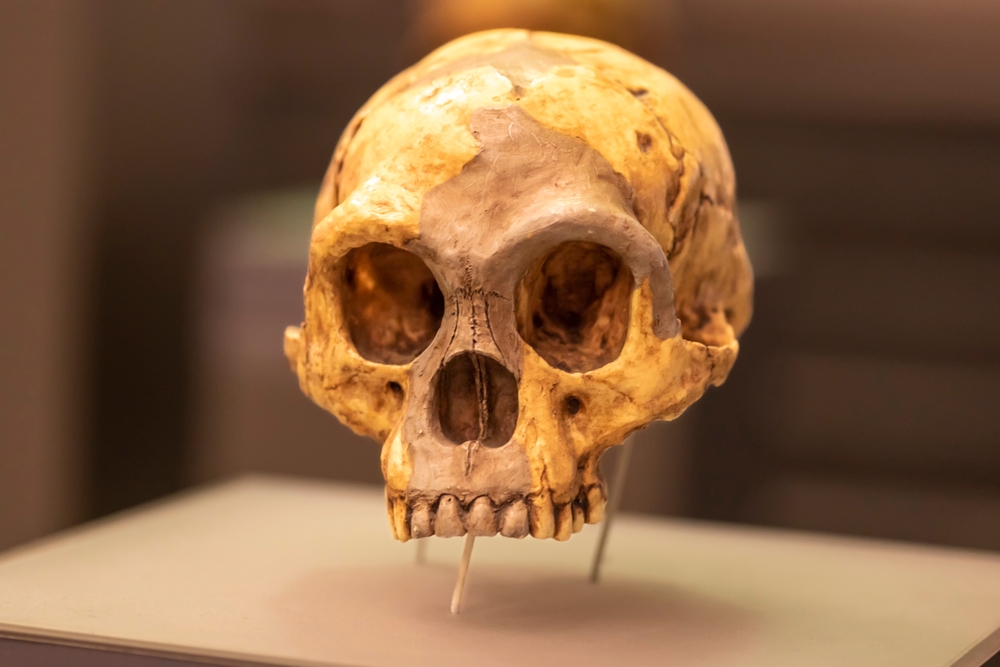The Flores Man Hobbits: Are They Still Alive?
Posted on Categories Discover Magazine

Hobbits are usually found feasting, drinking, gardening and destroying rings in Tolkien’s fictional Middle-Earth. But in reality, ancient remains indicate that hobbit-sized humanoids once lived on the Indonesian island of Flores. While researchers found artifacts such as stone tools, there was no evidence of dark lords or broken swords.
The ancient remains belonged to Homo floresiensis, also known as the Flores Hobbit or simply, hobbit. As more research goes into the Flores Hobbit, it leaves us with a few questions. Mainly, is H. floresiensis still alive today?
Island of Flores
According to the Smithsonian National Museum of Natural History, the island of Flores may have never experienced a land bridge that allowed the introduction of new species to the ecosystem.
During the Pleistocene Epoch (Ice Age), the island was home to various creatures, including Komodo dragons, giant tortoises, giant rodents and the Stegodon — a prehistoric elephant ancestor.
Flores Man Stone Tools
In the 1950s and ’60s, Father Theodor Verhoeven, a Dutch Catholic priest, was living and working on the island when he began excavating and locating what he believed to be archeological sites.
Having studied archeology while in college, Verhoeven was one of the first people to identify and report stone tools on the island, along with the remains of the Stegodon.
Initially, Verhoeven and others believed the stone stools were left behind by Homo erectus from the nearby island of Java. After analyzing and dating uncovered sediment in the 1990s, researchers began to believe that a humanoid — similar to H. erectus had once inhabited the island.
In 2003, after a nearly three-year excavation of Liang Bua cave, an Indonesian-Australian research team uncovered a skull belonging to H. floresiensis.
Who Discovered Homo floresiensis?
Archeologist Wahyu Saptomo supervised Benyamin Tarus, a local worker, as he cleared away sediment until a skull began to appear. With the help of Rokus Due Awe, a faunal expert, and archeologist Thomas Sutikna, they fully unearthed the remains of the skull.
Due to the size of the brain cavity, the researchers believed it was a child’s skull. But, after analyzing the skull’s teeth, finding that they were all permanent, they concluded that this had been the skull of an adult. Eventually, the partial remains of the skeleton were unearthed, and the researchers referred to the specimen as LB1 (Liang Bua 1).
However, the research team did not have a physical anthropologist. Mike Morwood, one of the research team leaders, asked Peter Brown, a palaeoanthropologist from the University of New England in Australia, to join. Brown’s work helped give H. floresiensis its name.
According to the 2004 study released by the research team in Nature, LB1 was a 30-year-old female nicknamed Little Lady of Flores or Flo. According to the remains, H. floresiensis would have stood just under 4 feet tall.
The Hobbits of Flores Island
Upon first discovery, the H. floresiensis remains were dated 12,000 years ago, making their existence quite recent for human evolution. Some of the first evidence of agriculture dates to about 12,000 years ago. However, after reanalysis, the remains of LB1 date closer to 100,000 to 60,000 years old, and the discovered stone tools date from 190,000 to 50,000 years old.
Since the initial find in 2003, researchers have found other H. floresiensis specimens on the island. Further analysis of their remains has led researchers to believe that H. floresiensis was more closely related to H. erectus and Australopithecus afarensis — aka Lucy.
Is the Flores Hobbit Still Alive?
Today, researchers continue to study H. floresiensis remains and any new specimens or artifacts they uncover on the island. Whether or not H. floresiensis is still alive today is still up for debate.
In 2022 a retired anthropologist, Gregory Forth, claimed that there had been sightings of an “ape-man” believed to be H. floresiensis on Flores. Others who have studied the Flores Hobbit disagree. They believe that on an island with a human population of nearly 2 million, there would be more frequent sightings of the Flores Hobbit.
That said, to survive, there would need to be a large population of H. floresiensis to continue to produce healthy offspring. With little to no evidence to prove this large population exists, it’s unlikely that the Flores Hobbit still lives on the island today.
Read More: Ancient Humans’ First Written Words Are 20,000 Years Old